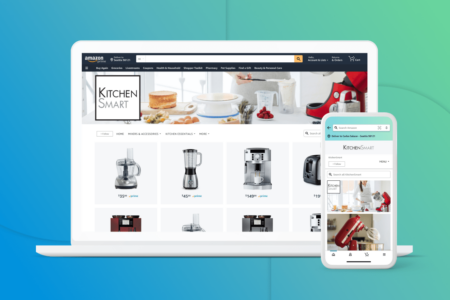Programmatic marketing is one of the most buzzed-about terms in digital advertising today, and for good reason. Many omni-channel strategies can no longer function without a robust programmatic element – and yet, the term still remains foreign to so many people.
In this article, the Clearwater team explore what programmatic marketing is, as well as how it can prove beneficial to your business.
What is Programmatic Marketing?
In short, programmatic marketing refers to the use of software to automate the buying and selling of online advertising. This is primarily built around the bidding and ad placement on various platforms offering advertising space, with the use of hyper-specific data being fed through this sophisticated technology in order to make smarter, more fruitful decisions.
This data includes many of a brand’s target audience’s demographics, such as age, career, location, and even their demonstrated interests. As such, programmatic ad buying allows marketers to target specific audiences with laser precision, and then serve them relevant ads in real-time, without any manual intervention throughout the process.
The programmatic ecosystem includes a complex web of technology providers, platforms, publishers, and data providers across the internet. For example, a business that engages in programmatic marketing may hold an algorithm finding social media to be the most effective platform to deliver strong ROI, so it will then place ads on Instagram & Facebook.
Advantages & Disadvantages of Programmatic Marketing
The Advantages of Programmatic Marketing
Programmatic marketing offers many benefits, making it an attractive option for advertisers, businesses and publishers. These include:
Improved Efficiency
Programmatic marketing helps to improve the efficiency of marketing campaigns by automating the process of buying and placing ads based on extensive testing done in relatively small spaces of time. Whereas traditional marketing can only be analysed at the completion of a campaign, programmatic marketing allows us to do this in real-time. This enables brands to rapidly determine who is most interested in their offerings, where these people are located online, and what they want to see before converting, all in a more cost-effective and time-efficient process, allowing teams to focus more on strategy than manual implementation.
Increased Reach
Programmatic marketing can help to increase the reach of a marketing campaign by targeting specific audiences with personalised messages, anywhere they can be found across the internet. This can help to ensure that your message is seen by the people who are most likely to be interested in it, via the platforms they frequent most. This is most notable in building brand awareness with a lower cost per thousand impressions (CPMs).
Improved ROI
Programmatic marketing can help to improve the return on investment (ROI) of marketing campaigns by optimising ad spend with the information garnered from the features described above. This means that more of your budget will be spent on ads that generate clicks, leads, and conversion, rather than wasted on uninterested viewers, or simply to build ‘insights’ on your wider market.
Reduced Ad Fraud
Ad fraud is rampant across many industries, but with intelligent machine learning, programmatic marketing software can identify fraudulent clicks and mitigate the impact on your campaigns.
The Disadvantages of Programmatic Marketing
As with anything, there are also some disadvantages to using programmatic marketing that must be considered before starting, including:
Lack of Control
Programmatic marketing can sometimes lack the control available with traditional methods of advertising. Early on, this can make it difficult to ensure that your ad is placed in the right location or seen by the right people in the way we intend.
Limited to Paid Advertising
Programmatic marketing is reserved for paid campaigns, meaning other methods must be relied on for organic digital marketing methods, such as content marketing and email marketing.
Complicated Technology
The technology involved in programmatic marketing can be complicated and difficult to understand for those new to the field. This can make it challenging to set up and manage without professional assistance.
How to Get Started With Programmatic Marketing
If you’re interested in using programmatic marketing, there are a few things you need to do to get started.
- First, you need to identify your target audience. This can be done by collecting data about potential customers and using that data to create targeted ad campaigns.
- Next, you need to find an ad exchange that offers programmatic marketing (Google Ads, social media advertising). Create an account and deposit money into your account. This money will be used to pay for the ads that you place on the ad exchange.
- You then need to create your ad campaigns. You can do this by selecting the type of ad, the target audience, the ad budget, and the ad schedule. Once you’ve created your ad campaign, you need to submit it to the ad exchange.
- Finally, optimise! From the day your campaign goes live, continuously analyse the available data to fine-tune the elements available in order to boost performance.
Should you need assistance integrating programmatic marketing into your wider digital marketing strategy, please feel encouraged to contact us at Clearwater today, and one of our specialists will be happy to assist.



